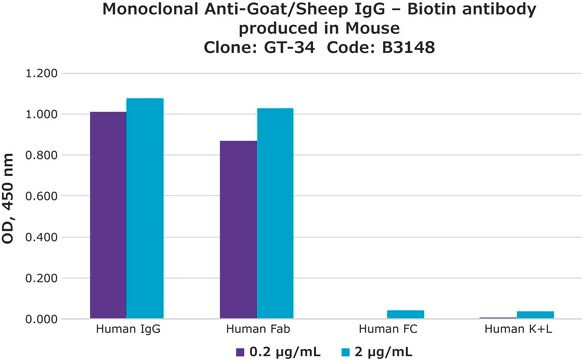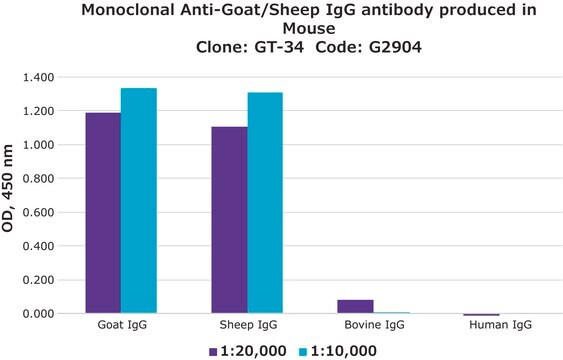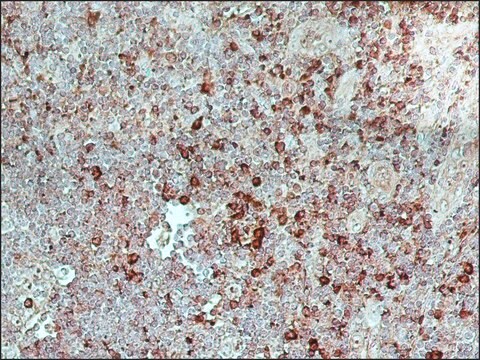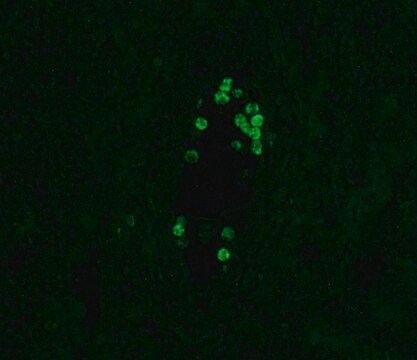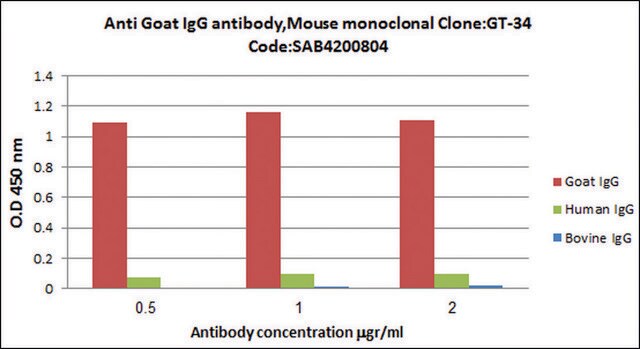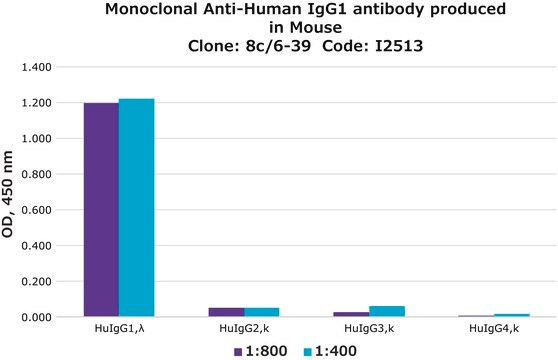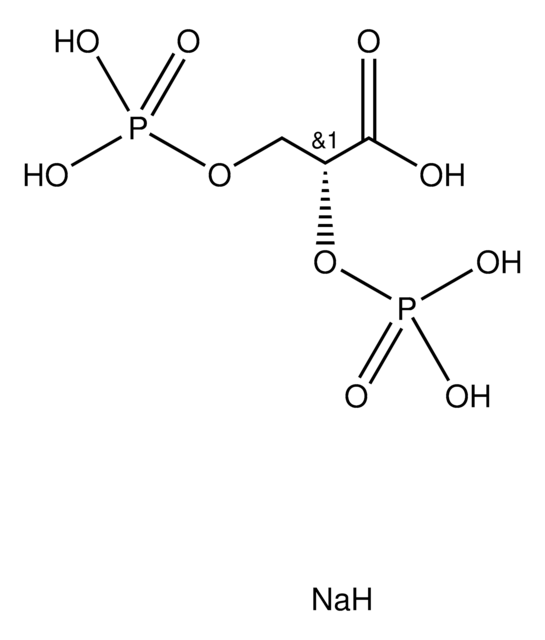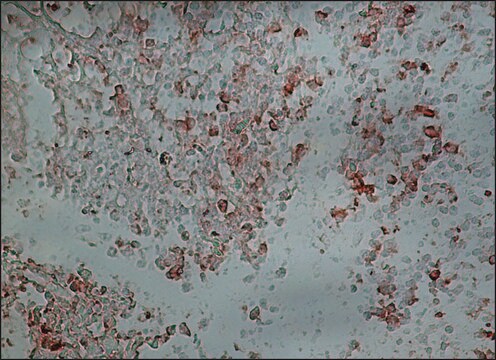Kluczowe dokumenty
F4891
Anti-Goat/Sheep IgG−FITC antibody, Mouse monoclonal
clone GT-34, purified from hybridoma cell culture
Synonim(y):
Monoclonal Anti-Goat/Sheep IgG
About This Item
Polecane produkty
pochodzenie biologiczne
mouse
Poziom jakości
białko sprzężone
FITC conjugate
forma przeciwciała
purified from hybridoma cell culture
rodzaj przeciwciała
secondary antibodies
klon
GT-34, monoclonal
Formularz
buffered aqueous solution
reaktywność gatunkowa
sheep, goat, bovine
spodziewany brak reakcji z
rat, canine, mouse, rabbit, guinea pig, chicken, horse, pig, feline, human
warunki przechowywania
protect from light
metody
dot immunobinding: 1:32
immunohistochemistry (formalin-fixed, paraffin-embedded sections): 1:20
particle immunofluorescence: 1:32
izotyp
IgG1
Warunki transportu
dry ice
temp. przechowywania
−20°C
docelowa modyfikacja potranslacyjna
unmodified
Szukasz podobnych produktów? Odwiedź Przewodnik dotyczący porównywania produktów
Powiązane kategorie
Opis ogólny
Specyficzność
Zastosowanie
Działania biochem./fizjol.
Postać fizyczna
Przechowywanie i stabilność
Oświadczenie o zrzeczeniu się odpowiedzialności
Nie możesz znaleźć właściwego produktu?
Wypróbuj nasz Narzędzie selektora produktów.
Kod klasy składowania
10 - Combustible liquids
Klasa zagrożenia wodnego (WGK)
nwg
Temperatura zapłonu (°F)
Not applicable
Temperatura zapłonu (°C)
Not applicable
Środki ochrony indywidualnej
Eyeshields, Gloves, multi-purpose combination respirator cartridge (US)
Wybierz jedną z najnowszych wersji:
Masz już ten produkt?
Dokumenty związane z niedawno zakupionymi produktami zostały zamieszczone w Bibliotece dokumentów.
Nasz zespół naukowców ma doświadczenie we wszystkich obszarach badań, w tym w naukach przyrodniczych, materiałoznawstwie, syntezie chemicznej, chromatografii, analityce i wielu innych dziedzinach.
Skontaktuj się z zespołem ds. pomocy technicznej